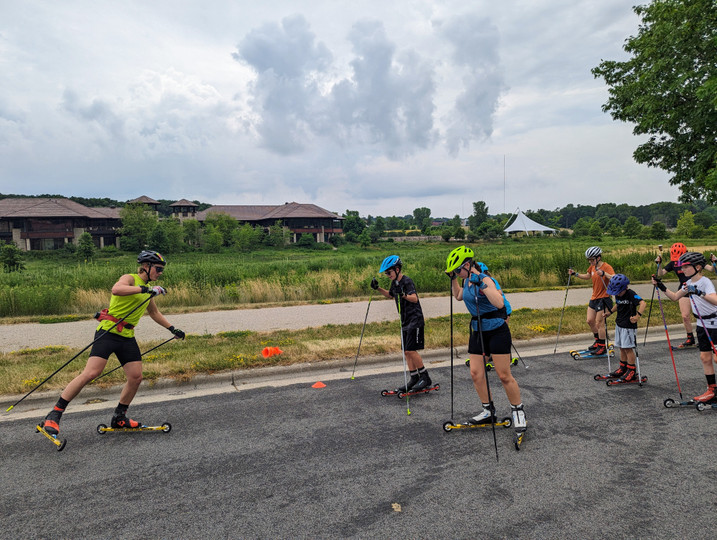Posted by Gus Schumacher on Sep 19th 2024
Rollerski vs. Ski Technique
Originally posted to SkiPost in August 2021
Rollerskiing is an amazing training tool for the summer. Whether your goal is winning the Birkie, or just making sure those first steps on snow don’t look like Bambi on ice, some summer rollerski training is probably on your radar. While it is a vital training tool for winter skiing, its misuse can make the return to snow slightly more complicated.
The biggest challenges in making rollerskiing effective are safety and technique. Obviously, you can’t ski very well in the winter if you get injured while rollerskiing, so safety comes first. Always wear helmet and bright clothes on the roads, and make sure your bindings and bolts are tight at the beginning of each ski. There are plenty of resources for rollerski safety, so I’m not going to go too deep into that (look it up on Fasterskier for more). I’d rather talk about a less common issue of differences in technique on pavement vs. snow.
The biggest difference I see in terms of training for snow skiing in the summer is the response you get from rollerskis. In both techniques, but especially classic, the grip you get from your skis on each push is usually much greater than on skis. This means that a whole summer of rollerskiing can slowly teach you to become reliant on that sticky rubber to kick well, often leading to a lack of finesse when the snow falls again. To fix this problem, the strongest tool is to watch video of people skiing in winter and trying to emulate that. It helps a lot to see yourself also, so setting up a camera or having a helpful friend will go a long way. As long as you are aware of this difference and make sure to not become reliant on “rollerski kick”, you’ll likely be able to work well on technique all year round. You can also use wet pavement as a way to practice not having great kick, but it can get frustrating because better technique doesn’t always translate to better power transfer. My policy is that I don’t seek out wet pavement for this reason, but when I come across it I use it as a reminder to not just blindly push on my skis.
Another difference is one that depends on which rollerski wheels you use, and that is speed. If your goal in rollerskiing is to get better at snow skiing, you should aim for similar speed wheels to what you’d ski on. Some rollerskis come with really fast wheels, which can be good for developing quickness and comfortability on pavement, but pose a problem when trying to work on technique and power. For this reason, I like to have a bit slower wheels (as snow is usually pretty slow). My preferred wheel speed is swenor 3 or one 2 and one 3. Wheel speed varies brand to brand, but it’s worth it to try to find wheels that feel the most like skiing. The default swenor 2 is all around a good speed for summer training, but if your aim is to develop power and slower technique more, a slower wheel might be better for you.
The specific techniques I’ve found toughest to practice on rollerskis are skate V1 and classic striding. I think this is because roads don’t usually get as steep as ski trails, but it could also be because of differences in rollerski vs. ski friction at slow speeds. Because of this, I like to seek out steep paved hills every once in a while (they don’t have to be long), and practice those techniques. If that’s unavailable in your area, you might want to try ski walking or bounding or, if you’re brave, grass skiing. These are all good tools to practice striding, but there honestly aren’t many great alternatives to practice a good V1, so you might just have to wait for winter.
I hope you guys are getting out and enjoying some activity this summer (especially if it’s rollerskiing)! Stay safe and keep it up.

